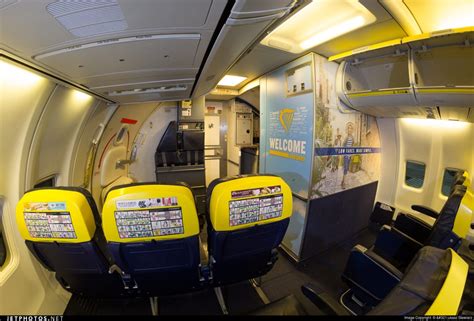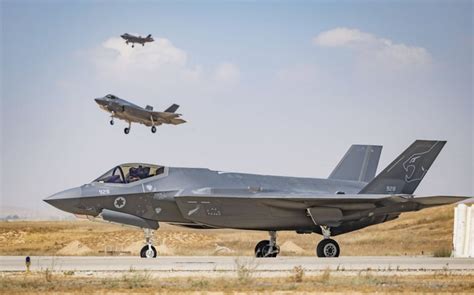
Air India Flight 855, a Boeing 747, tragically crashed into the Arabian Sea on New Year’s Day in 1978, just three minutes after takeoff from Mumbai, killing all 213 passengers and crew onboard. Newly surfaced details from the official investigation highlight a critical sequence of events where a malfunctioning instrument and the captain’s potential misinterpretation of it led to a catastrophic loss of control within a mere 30 seconds, underscoring how quickly a complex system failure can escalate into disaster.
The ill-fated flight, bound for Dubai, experienced a failure in the captain’s attitude indicator, an instrument crucial for determining the aircraft’s orientation relative to the horizon. According to the investigation, the indicator malfunctioned, providing a false reading that suggested the plane was banking to the left when, in reality, it was flying straight. Compounding the problem, it appears the captain reacted to this false indication, further exacerbating the situation. The report suggests that the co-pilot’s instruments correctly showed the aircraft’s actual attitude, potentially providing an opportunity to avert the disaster had the discrepancy been recognized and addressed promptly. The suddenness of the crash, occurring only 176 seconds after takeoff, left little time for the crew to diagnose and correct the escalating crisis.
The Air India Flight 855 disaster remains a stark reminder of the critical importance of crew resource management (CRM), instrument reliability, and clear communication within the cockpit. The investigation’s findings emphasize the need for pilots to cross-check instrument readings, maintain situational awareness, and effectively communicate any discrepancies to prevent similar tragedies. The crash spurred significant advancements in aviation safety protocols and cockpit design, aimed at reducing the likelihood of pilot error in response to instrument malfunctions.
The Fateful Flight and Its Passengers
Air India Flight 855 was a scheduled international passenger flight operating between Mumbai (then Bombay) and Dubai. On January 1, 1978, the Boeing 747-237B aircraft, registered VT-EBO and named “Emperor Ashoka,” departed from Mumbai’s Sahar International Airport (now Chhatrapati Shivaji Maharaj International Airport) at approximately 8:41 PM local time. The flight carried 190 passengers and a crew of 23, comprising experienced pilots, flight attendants, and other essential personnel.
The manifest included a diverse mix of individuals, ranging from business travelers and tourists to families returning home after the holidays. Many were Indian nationals working in the Gulf region, while others were foreign citizens connecting through Dubai to various destinations. The loss of so many lives had a profound impact on the families of the victims, the aviation community, and the nations involved.
The Critical Moments: 30 Seconds to Disaster
The official investigation, meticulously piecing together the events leading to the crash, revealed a harrowing sequence of events unfolding in the cockpit within the final 30 seconds of the flight. The primary cause was attributed to the captain’s misinterpretation of a malfunctioning attitude indicator, an instrument vital for maintaining the aircraft’s orientation.
The attitude indicator, also known as the artificial horizon, displays the aircraft’s pitch and roll angles, providing pilots with a visual reference to the horizon, especially during low-visibility conditions or at night. In the case of Flight 855, the captain’s attitude indicator allegedly malfunctioned shortly after takeoff, displaying an erroneous left bank.
Investigators believe that the captain, acting on this false information, reacted by applying right aileron input, attempting to correct the perceived left bank. However, since the aircraft was actually flying straight, this control input induced a real right bank. The co-pilot’s attitude indicator, functioning correctly, would have shown the actual bank angle, but it appears this discrepancy was either not recognized or not effectively communicated in time to correct the situation.
According to the report, the aircraft entered a steepening right bank, and the captain, likely disoriented, may have continued to apply incorrect control inputs, further exacerbating the bank angle. The Boeing 747, a wide-body aircraft, is inherently stable, but its large size and inertia make it susceptible to rapid loss of control if mishandled, especially at low altitudes and speeds.
As the bank angle increased, the aircraft began to lose altitude rapidly. The crew, now facing a critical situation, would have struggled to regain control in the limited time available. The investigation suggests that the final moments were characterized by confusion and a desperate attempt to recover the aircraft from its precarious position.
The flight data recorder (FDR), one of the two “black boxes,” provided crucial data confirming the aircraft’s rapid descent and increasing bank angle. The cockpit voice recorder (CVR) captured the crew’s communication during those critical seconds, revealing a growing sense of urgency and alarm. However, the CVR recordings were reportedly unclear and did not provide definitive insight into the crew’s decision-making process.
The aircraft ultimately crashed into the Arabian Sea at a high speed and a steep angle, disintegrating upon impact. The wreckage was scattered over a wide area, making the recovery of bodies and aircraft components a challenging and time-consuming task.
The Investigation and Its Findings
The official investigation into the Air India Flight 855 crash was conducted by the Indian Directorate General of Civil Aviation (DGCA). The investigation team included experienced accident investigators, aviation experts, and representatives from Boeing, the aircraft manufacturer. The process involved a thorough examination of the wreckage, flight data recorder (FDR) and cockpit voice recorder (CVR) data, air traffic control recordings, and witness statements.
One of the key challenges faced by investigators was the limited availability of recoverable wreckage due to the aircraft’s disintegration upon impact and the vastness of the search area in the Arabian Sea. Despite these challenges, investigators were able to piece together a comprehensive picture of the events leading to the crash.
The final report concluded that the primary cause of the accident was the captain’s misinterpretation of the malfunctioning attitude indicator, leading to incorrect control inputs that resulted in a loss of control. The report also highlighted several contributing factors, including:
- Malfunctioning Instrument: The failure of the captain’s attitude indicator was a critical initiating event. The investigation determined that the instrument had a history of intermittent malfunctions and had not been properly maintained.
- Crew Resource Management (CRM) Deficiencies: The investigation identified shortcomings in crew resource management, particularly in the areas of communication and cross-checking of instrument readings. The co-pilot’s awareness of the correct aircraft attitude was not effectively communicated to the captain in time to prevent the accident.
- Lack of Situational Awareness: The captain’s apparent fixation on the malfunctioning attitude indicator may have led to a loss of situational awareness, preventing him from recognizing and responding to the actual aircraft attitude.
- Environmental Factors: Although not considered a primary cause, the investigation acknowledged that factors such as darkness and the lack of visual references over the sea may have contributed to the crew’s disorientation.
The investigation report made several recommendations aimed at preventing similar accidents in the future. These recommendations included:
- Improved maintenance procedures for attitude indicators and other critical flight instruments.
- Enhanced crew resource management training, emphasizing the importance of communication, cross-checking, and situational awareness.
- Improved cockpit design to reduce the potential for pilot confusion in response to instrument malfunctions.
- Implementation of stricter regulations regarding the operation of aircraft with known instrument malfunctions.
Impact on Aviation Safety
The Air India Flight 855 disaster had a significant impact on aviation safety, leading to several important changes in aircraft design, pilot training, and air traffic control procedures.
Following the crash, aviation authorities around the world reviewed their maintenance procedures for attitude indicators and other critical flight instruments. Many airlines implemented more rigorous inspection and testing protocols to ensure the reliability of these instruments.
The disaster also underscored the importance of crew resource management (CRM) training. CRM programs were enhanced to emphasize the importance of effective communication, cross-checking, and situational awareness in the cockpit. Pilots were trained to be more assertive in questioning each other’s decisions and to challenge assumptions based on potentially unreliable instrument readings.
In the wake of the crash, aircraft manufacturers also re-evaluated cockpit designs to reduce the potential for pilot confusion in response to instrument malfunctions. Some aircraft were equipped with redundant attitude indicators or enhanced displays that provided clearer and more intuitive information about the aircraft’s attitude.
The Air India Flight 855 disaster also prompted a review of air traffic control procedures. Air traffic controllers were trained to be more vigilant in monitoring aircraft performance and to provide timely warnings to pilots if they detected any unusual deviations from expected flight paths.
Crew Resource Management (CRM) and Its Significance
Crew Resource Management (CRM) emerged as a critical focus in aviation safety following several high-profile accidents, including the Air India Flight 855 disaster. CRM is a management system that utilizes all available resources – human, hardware, and information – to achieve safe and efficient flight operations. It emphasizes the importance of teamwork, communication, and decision-making in the cockpit.
The core principles of CRM include:
- Communication: Effective communication is essential for ensuring that all crew members are aware of the situation and can contribute to the decision-making process. This includes clear and concise communication of information, as well as active listening and feedback.
- Teamwork: CRM promotes a collaborative approach to flight operations, where all crew members work together as a team to achieve common goals. This includes sharing information, coordinating tasks, and supporting each other in times of stress.
- Situational Awareness: Maintaining situational awareness is crucial for identifying and responding to potential hazards. This involves constantly monitoring the aircraft’s systems, the environment, and the progress of the flight.
- Decision-Making: CRM provides a framework for making sound decisions in complex and dynamic situations. This includes identifying the problem, gathering information, evaluating options, and implementing a solution.
- Leadership: Effective leadership is essential for creating a positive and productive work environment. This includes setting clear goals, providing guidance and support, and fostering a culture of safety.
The Air India Flight 855 disaster highlighted the importance of CRM in preventing accidents caused by human error. The investigation revealed that a breakdown in communication and a lack of cross-checking of instrument readings contributed to the crash. Since then, CRM training has become a standard component of pilot training programs around the world.
The Boeing 747: A Workhorse of the Skies
The Boeing 747, often referred to as the “Queen of the Skies,” is a wide-body airliner that revolutionized air travel when it was introduced in the late 1960s. Its iconic hump and massive size made it an instantly recognizable symbol of the jet age. The 747 played a crucial role in making long-distance air travel more affordable and accessible to the general public.
The Boeing 747-200 series, the variant involved in the Air India Flight 855 disaster, was a popular version of the aircraft, offering increased range and payload capacity compared to the original 747-100. The 747-200 could carry over 400 passengers and fly non-stop for thousands of miles.
While the Boeing 747 is a technologically advanced and reliable aircraft, it is not immune to mechanical failures or human error. The Air India Flight 855 disaster serves as a reminder that even the most sophisticated aircraft can be vulnerable to accidents if not properly maintained and operated.
The 747’s complexity also means that pilots require extensive training to operate it safely. Understanding the aircraft’s systems, procedures, and limitations is essential for preventing accidents. The Air India Flight 855 crash underscored the importance of thorough training and adherence to standard operating procedures.
The Boeing 747 has been continuously updated and improved over the years. The latest version, the 747-8, features advanced aerodynamics, more efficient engines, and a modernized cockpit. The 747 remains a popular choice for long-haul passenger and cargo flights, although its production has ceased.
The Aftermath and Legacy
The Air India Flight 855 disaster left a lasting impact on the families of the victims, the aviation industry, and the nation of India. The loss of 213 lives was a tragedy that resonated deeply with people around the world.
In the immediate aftermath of the crash, search and rescue operations were launched to recover bodies and wreckage from the Arabian Sea. The recovery efforts were hampered by the vastness of the search area and the challenging weather conditions.
The families of the victims were offered compensation by Air India and the Indian government. However, no amount of money could ever replace the loss of loved ones. The disaster left many families grieving and struggling to cope with the emotional and financial consequences of the tragedy.
The Air India Flight 855 disaster also had a significant impact on the aviation industry. The investigation revealed several critical safety deficiencies that needed to be addressed. As a result, aviation authorities around the world implemented new regulations and procedures aimed at preventing similar accidents in the future.
The crash also served as a catalyst for advancements in aircraft design, pilot training, and air traffic control procedures. These improvements have helped to make air travel safer and more reliable.
The Air India Flight 855 disaster remains a somber reminder of the risks inherent in aviation. It underscores the importance of vigilance, training, and adherence to safety protocols. The lessons learned from this tragedy continue to shape the aviation industry to this day.
Technological Advancements in Aviation Safety
Since the Air India Flight 855 disaster, significant technological advancements have been implemented in aviation to enhance safety and prevent similar incidents. These advancements span various areas, including aircraft design, navigation systems, and weather forecasting.
Enhanced Flight Management Systems (FMS): Modern aircraft are equipped with sophisticated Flight Management Systems (FMS) that integrate navigation, performance, and guidance functions. These systems provide pilots with real-time information about the aircraft’s position, altitude, speed, and heading, as well as weather conditions and terrain features. FMS can also generate flight plans and provide guidance for optimal fuel efficiency and flight path adherence.
Global Positioning System (GPS) and Satellite Navigation: The advent of GPS and other satellite navigation systems has revolutionized air navigation. These systems provide highly accurate and reliable position information, enabling pilots to navigate precisely even in remote areas or during periods of poor visibility. Satellite-based navigation has also facilitated the development of more precise approach and landing procedures.
Enhanced Weather Radar Systems: Modern weather radar systems provide pilots with detailed information about weather conditions along their flight path. These systems can detect thunderstorms, turbulence, wind shear, and other hazardous weather phenomena, allowing pilots to avoid these areas and maintain a safe flight.
Traffic Collision Avoidance System (TCAS): TCAS is an airborne system that detects potential collisions with other aircraft and provides pilots with alerts and guidance to avoid a collision. TCAS has significantly reduced the risk of mid-air collisions, particularly in congested airspace.
Ground Proximity Warning System (GPWS) and Enhanced Ground Proximity Warning System (EGPWS): GPWS and EGPWS are systems that provide pilots with alerts if the aircraft is in danger of colliding with terrain. EGPWS incorporates a terrain database that provides enhanced warning capabilities, particularly in mountainous areas.
Automatic Dependent Surveillance-Broadcast (ADS-B): ADS-B is a surveillance technology in which aircraft automatically transmit their position, altitude, speed, and other information to air traffic control and other aircraft. ADS-B provides enhanced situational awareness for both pilots and air traffic controllers, improving safety and efficiency.
Cockpit Display Technologies: Modern cockpits feature advanced display technologies, such as electronic flight instrument systems (EFIS) and head-up displays (HUD), that provide pilots with clear and intuitive information about the aircraft’s performance and environment. These displays can reduce pilot workload and improve situational awareness.
Flight Data Recorders (FDR) and Cockpit Voice Recorders (CVR): FDRs and CVRs, often referred to as “black boxes,” record critical flight data and cockpit audio, providing valuable information for accident investigations. These recorders have been instrumental in identifying the causes of accidents and developing recommendations for preventing future incidents.
These technological advancements have significantly improved aviation safety, making air travel one of the safest modes of transportation. However, it is important to remember that technology is only one component of a safe aviation system. Human factors, such as pilot training, crew resource management, and air traffic control procedures, also play a crucial role in preventing accidents.
FAQ Section:
1. What was the primary cause of the Air India Flight 855 crash?
The primary cause was the captain’s misinterpretation of a malfunctioning attitude indicator, leading to incorrect control inputs that resulted in a loss of control.
2. What were some of the contributing factors to the accident?
Contributing factors included the malfunctioning instrument, deficiencies in crew resource management (specifically communication and cross-checking), lack of situational awareness, and potentially environmental factors such as darkness.
3. What is an attitude indicator and why is it important?
An attitude indicator, also known as an artificial horizon, displays the aircraft’s pitch and roll angles, providing pilots with a visual reference to the horizon, especially during low-visibility conditions or at night. It is crucial for maintaining the aircraft’s orientation.
4. What is Crew Resource Management (CRM) and how did the Air India Flight 855 disaster impact its development?
Crew Resource Management (CRM) is a management system that utilizes all available resources – human, hardware, and information – to achieve safe and efficient flight operations. The Air India Flight 855 disaster highlighted the importance of CRM, particularly in the areas of communication and cross-checking of instrument readings, leading to enhanced CRM training programs worldwide.
5. What safety improvements were implemented in the aviation industry as a result of the Air India Flight 855 crash?
Safety improvements included improved maintenance procedures for attitude indicators, enhanced CRM training, improved cockpit designs to reduce pilot confusion, and stricter regulations regarding the operation of aircraft with known instrument malfunctions.









